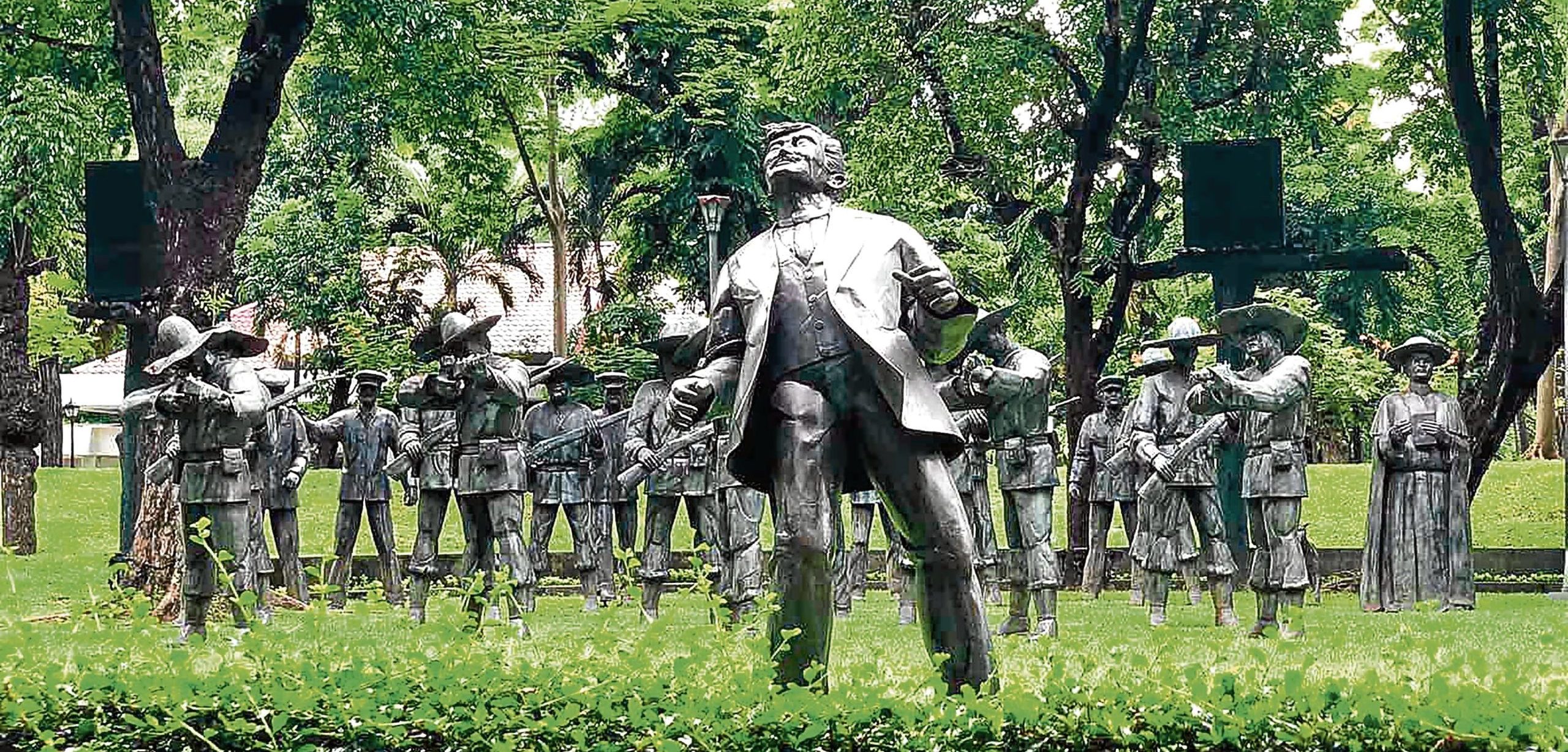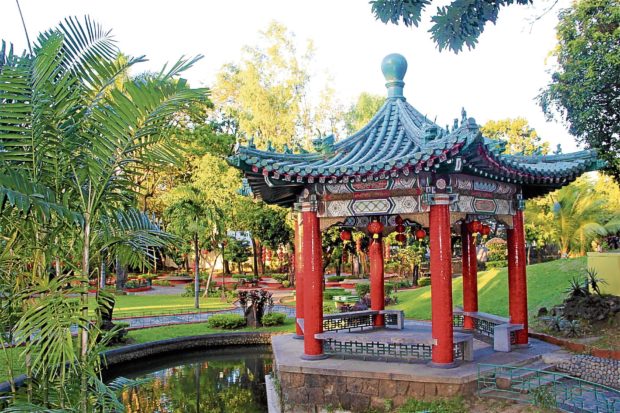
Before the pandemic, the homeless slept on the sidewalk in front of the Rizal Park visitors’ entrance, all the way from T.M. Kalaw to Taft Avenue. Every morning, they performed their morning ablutions at the carved fountain where Jose Rizal used to drink when he was an assistant medical practitioner at an eye hospital in Heidelberg, Germany.
The fountain was originally in the courtyard in the home of Pastor Gottlieb Weber in the university town of Wilhemsfeld, Heidelberg, where Rizal finished the woke novel, “Noli Me Tangere.” In 1964, the Federal Republic of Germany turned over the fountain to the Philippines.
Call it the defilement of a hero’s memorial or the desecration of a symbol of friendship between two countries. To the homeless and hobos, however, they were just answering Nature’s call. Noli Me Tangere Garden in Rizal Park was the most convenient place. Diligently, the maintenance team cleaned up the mess in the fountain.
With pandemic restrictions in place, the homeless have disappeared. Noli Me Tangere Garden has become an oasis of mahogany trees and clipped hedges. The fountain, the map of Europe where Rizal traveled and the bust of the hero’s confidante, Ferdinand Blumentritt, inject nuggets of history.
At Central Section where Rizal’s shrine stands, the lawns previously damaged by heavy foot traffic have recovered. They became lush again during the long lockdowns.
In the past, high-powered CCTV cameras identified thieves and most-wanted criminals with the help of the National Bureau of Investigation. Under tight security measures, parkgoers feel safe again. If there were, as the cliché goes, silver linings in this pandemic, one of them would be the revitalization of Rizal Park.
Recreation and execution
During the Spanish era, engineers built several rings of military protection around Manila. They were crescent-shaped bastions, called lunette in French and luneta in Spanish.
Luneta meant a fortress which could be accessed from within the city. The location of Rizal Park was in a district called Bagumbayan.
As more homes of the affluent emerged in the 18th century, residents needed a place to promenade. They were drawn to the open fields in Ermita and Malate. The roundabout route between what are now known as Ermita and Malate became known as Paseo de Luneta, or Luneta. It evolved into a leisure and recreational space, but the place also served as an execution ground during the revolutionary years.
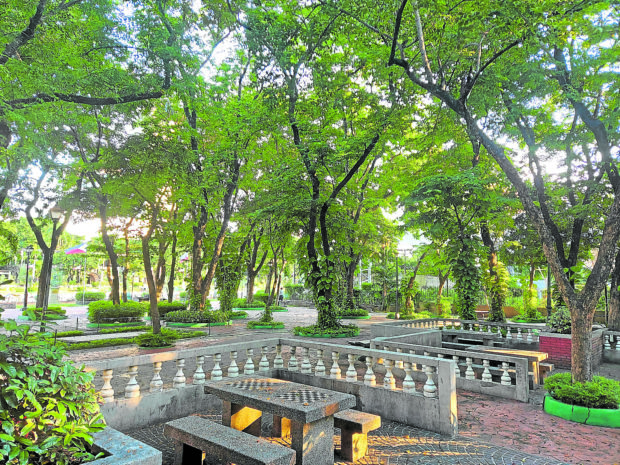
The Americans integrated the park into the government’s civic center and installed Rizal Monument as the equivalent of the iconic obelisk in Washington. Before the war, Luneta was the center for expositions and the famous Manila Carnival.
To preserve the park’s beauty, President Diosdado Macapagal formed the National Park Development Committee (NPDC) in 1963. President Ferdinand Marcos renamed Luneta as Rizal Park, and inspired the Taiwanese and Japanese governments to donate the Chinese and Japanese Gardens respectively.
During the martial law years, the NPDC, under executive director Teodoro Valencia, flourished. Aside from expanding the park, Valencia encouraged cultural activities through the Concert at the Park series, which contributed to the city’s sense of place.
Modernized green space
In a move to reorganize the NPDC, Tourism Secretary Bernadette Romulo Puyat tapped Cecille Lorenzana-Romero as executive director and Jezreel Apelar as deputy executive director. More than ever, the NPDC has been making efforts to provide a practical green space that has a positive impact on the well-being of the people.
With the ban on food and physical distancing and the waiver of entrance fees to special sites, people can enjoy clean, passive recreation through the park’s shady areas, watch the dancing water fountains at Central Lagoon and sit on the benches designed by sculptor Toym Imao at Chess Square.
The park also provides educational benefits. Some 30 spots have QR codes on signs, through which visitors can access historical information about the sites.
“We’ve been modernizing the park,” says Apelar. Previously, lighting up the park and watering the lawn were time-consuming as they were done manually. The NPDC initiated the automation of lights to make the park safer at night, and the sprinkler system, which minimized wastage of water.
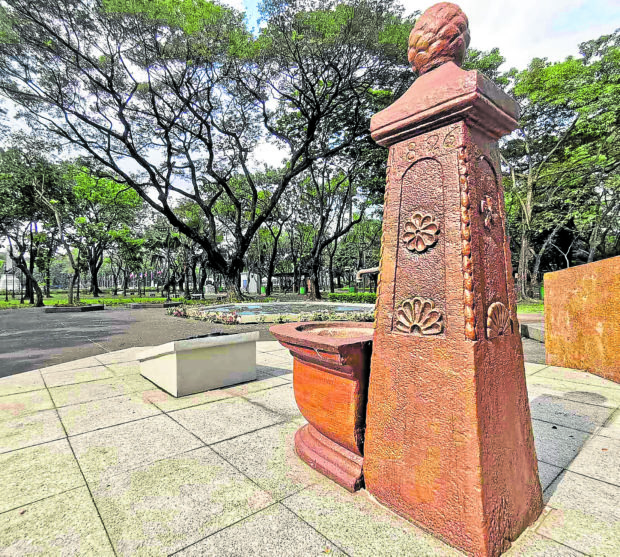
The NPDC hired a professional team, JSA Landscape Group, to maintain the place. One would be impressed by the well-clipped topiaries, the manicured lawns, the canopies of old trees and mobiles of petunias that dangle from lamp posts, and the rows of eucalyptus trees and bougainvillea hedges bordering the lagoon. The large water drums have been repurposed into colorful drinking fountains, painted by visual artists. These little details have made visitors’ park experience more pleasant.
Sacred ground
Signs of age were visible during shows at the open-air auditorium. The tiles on the wall panel were falling off. The roof leaked on the stage, making performers feel uncomfortable. Since the quarantine, renovations have addressed these issues.
An LED wall was installed and plans are afoot to upgrade the sound system and facilities. The auditorium can be rented out for socially distanced live events.
Until the government allows live performances again, the Concert at the Park remains a monthly virtual show, presenting upcoming artists at various picturesque sections,
One of the park’s sacrosanct spaces is Ang Pagpapakabayani ni Dr. Jose P. Rizal (The Martyrdom of Dr. Jose P. Rizal) site, which is planted in a grove of narra trees. Apelar recalls that when he first visited the site, he was appalled by the bright blue pond at the entrance, giving the appearance of a recreational pool. The pond was eventually retiled a darker shade to lend a sacred atmosphere. Around the garden are frangipani trees named after the country’s first ladies.
The late sculptor Eduardo Castrillo mounted a graphic life-size tableau of Rizal’s execution with a Filipino shooting him from the front row. A lone statue of a friar behind the soldiers suggested that the capital punishment was prompted by the Spaniards.
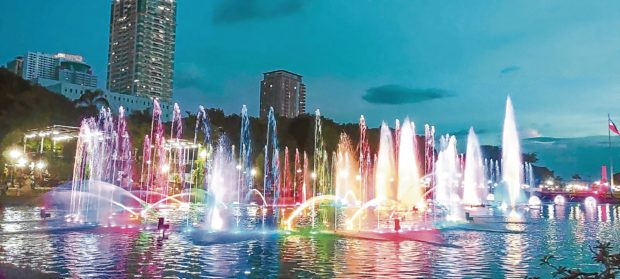
The dramatic diorama gives the impression that the execution took place in a forest. Silence falls on the ground, broken only by the symphony of crickets and birds.
The park highlight, naturally, is Rizal Monument, which stands against a clear sky if you look at it from a certain angle. Otherwise, the controversial condominium, which was described as the “national photo bomber,” is in full view.
In the past, hundreds of Filipinos gathered every morning on the first Monday of the month for the flag hoisting ceremony at the country’s tallest flagpole (150 feet). The special guests dressed in Filipiniana and the crowds joined live singers in rendering “Lupang Hinirang.”
The ritual stopped, as public gatherings are still prohibited. Yet, visitors are drawn to the flag and Rizal Monument, guarded by the Marines, to acknowledge their cultural identity and heritage. —CONTRIBUTED INQ

